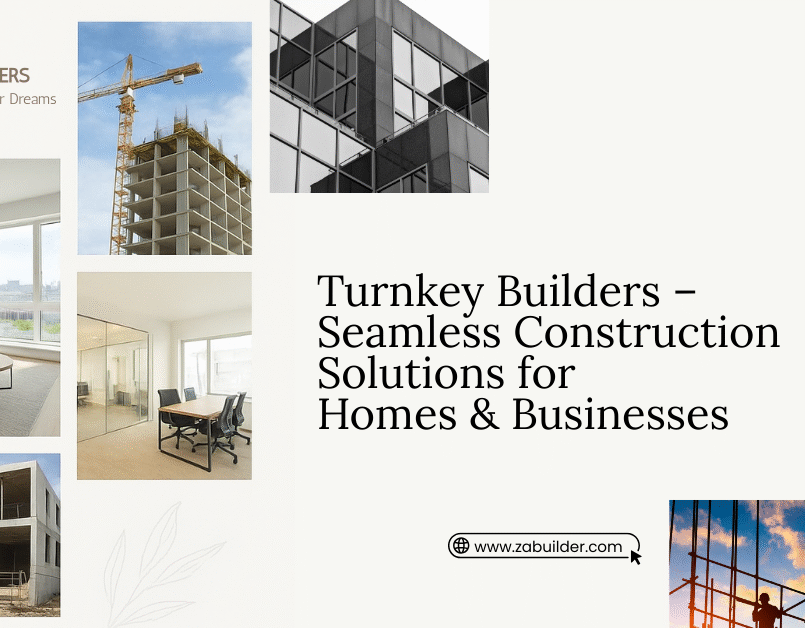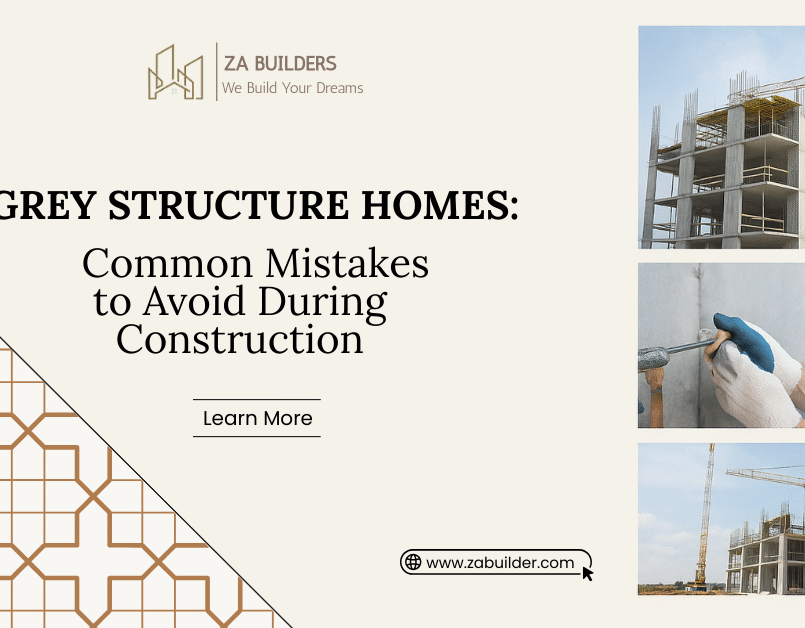Turnkey Construction vs. Traditional Construction: What’s the Difference?
In the process of constructing a property either a residential villa or a commercial plaza, the decision on the appropriate construction model used remains one of the first and most important decisions that should be made by the client. Among them include turnkey construction and traditional construction which are ranked highest. Both directions have pros and cons, but you may define the basic distinctions and rely on them to make a decision that would fit your schedule, financial opportunities, and vision best. The correct selection of models can be the difference maker or a breaker in a project especially in the developing urbanities such as Lahore, Karachi and Islamabad where the built environment is fast developing.
What Is Turnkey Construction?
A turnkey project refers to a construction model where the contractor takes full responsibility from start to finish. The client simply “turns the key” to enter a fully completed, functional space—hence the term “turnkey.”
This means the contractor:
- Designs the building
- Procures materials
- Hires labor
- Manages the site
- Oversees all approvals and inspections
- Delivers a move-in ready building
For clients, it’s a hassle-free solution. Think of it as ordering a fully furnished house instead of assembling one room at a time.
What Is Traditional Construction?
Traditional construction, often called design-bid-build, is a more segmented and client-involved approach. The client hires:
- An architect or design consultant to develop plans.
- A contractor based on bids or quotations.
- Various vendors for materials and supplies.
The client plays a central role in coordination, timeline management, and often even procurement.
This model gives the client more control—but also more responsibility and risk.
Key Differences at a Glance
Feature | Turnkey Construction | Traditional Construction |
Project Control | Contractor handles everything | Client oversees each phase |
Timeline Management | Contractor ensures delivery | Client manages delays |
Costing | Fixed, agreed-upon price | Cost may change with time or design |
Design Flexibility | Limited after signing | Higher flexibility throughout |
Client Involvement | Minimal | High |
Risk Factor | Lower for client | Higher for client |
Ideal For | Busy professionals, investors | Hands-on homeowners or developers |
The Rise of Turnkey Solutions in Pakistan
In cities like Lahore, Karachi, Islamabad where construction activity is booming and real estate investments are surging turnkey construction is rapidly becoming the preferred model for many clients.
Why?
1.Time Constraints
Many of ZA Builders’ clients are overseas Pakistanis or working professionals. They don’t have the luxury of micromanaging a project. A turnkey solution offers them peace of mind and a fixed handover date.
2. Dealing with Regulatory Bodies
Navigating the LDA (Lahore Development Authority) or handling utility approvals can be time consuming. Under the turnkey model, ZA Builders takes on this legwork, ensuring the client never has to stand in long queues or struggle with documentation.
3. Cost Management in a Volatile Market
With fluctuating prices of cement, steel, and other materials in the Pakistani market, fixed-cost turnkey contracts provide clients with protection against unexpected price hikes. Once the price is locked, there are no surprises.
4. One Point of Contact
Turnkey projects simplify communication. Clients interact with just one project manager, not dozens of vendors and consultants. This creates better accountability and smoother execution.
Why Some Still Prefer Traditional Construction
That said, traditional construction still has its loyalists especially among experienced developers and hands-on homeowners. Here’s why:
Customization and Control
Some clients want full creative freedom and control over every tile, fitting, and material used. Traditional construction allows them to change directions mid-way without waiting for contractor approval.
Lower Initial Costs
In some cases, clients perceive traditional models to be cheaper because they can shop around for deals on materials. However, this comes with trade-offs—mainly in time and risk.
Family-Managed Projects
In Pakistan, many families pool resources to construct multi-unit homes. These projects are often run like a family operation, with relatives overseeing daily tasks. Traditional construction aligns more naturally with this hands-on style.
Which Model Is Better for You?
At ZA Builders, we’ve worked on both models across Pakistan most in-demand localities from DHA, Bahria Town to Model Town and Gulberg. Here’s our honest take:
Choose Turnkey If:
- You want a hands-off experience
- You’re short on time or live abroad
- You want a fixed cost and completion date
- You prefer one contract, one payment plan, and one delivery commitment
Choose Traditional If:
- You want to be deeply involved
- You have a trusted team of vendors and workers
- You’re building a unique custom home with complex design elements
- You can afford time delays and enjoy site visits
Final Thoughts
The debate between turnkey and traditional construction has nothing to do with being right or wrong, but rather what suits your lifestyle, vision, and level of risk proportionality. At ZA Builders, we would be glad to explain to you either of the two options. Are you a turnkey kind of person, or do you prefer a more traditional approach? Regardless of your approach, our team can deliver excellence. Are you looking forward to constructing your dream area in Lahore? Why sweat out the slog of making your vision become reality when you can sit back and leave it to ZA Builders? Call us now to get a consultation free of charge.
Frequently Asked Questions
The key distinction is on the project manager and the extent to which the client is involved. Under the turnkey construction, one contractor does all the work, including the design and delivery, and leaves the client with a completed building. The client does not need to bother with hiring architects, sourcing material, or managing labour.
On the contrary, with the conventional approach, the client carries out various phases independently. They can enlist a designer, select contractors by bid and arrange materials and labor themselves. This provides additional control at the cost of complexity and risk.
In Pakistan, the concept of turnkey construction is increasingly becoming popular, particularly in Lahore, Islamabad, and Karachi, because it is convenient, predictable and exactly as it should be. As the material prices and labor are variable and the deadlines are fixed, a fixed-cost, fixed-deadline turnkey model gives a greater sense of reprieve, particularly to the expatriates in Pakistan and busy individuals.
But one might want to have full control, experience in project management, or build highly customized spaces, which may make traditional construction a better choice. The better alternative is based on your financial capacity, time, and ability to do logistics.
However, traditional construction may be preferred by those who want full control, have experience in project management, or are constructing highly customized spaces. The “better” option depends on your budget, time availability, and comfort with handling logistics.
Pros:
- Stress-free and well organised.
- Fixed pricing reduces budget surprises
- One point of contact
- Ideal for remote or overseas clients
- Faster project delivery with clear timelines
Cons:
- Inflexibility once the project has started.
- Less client control over material choices or labour
- The scope of the contractor can limit the customisation options.



